
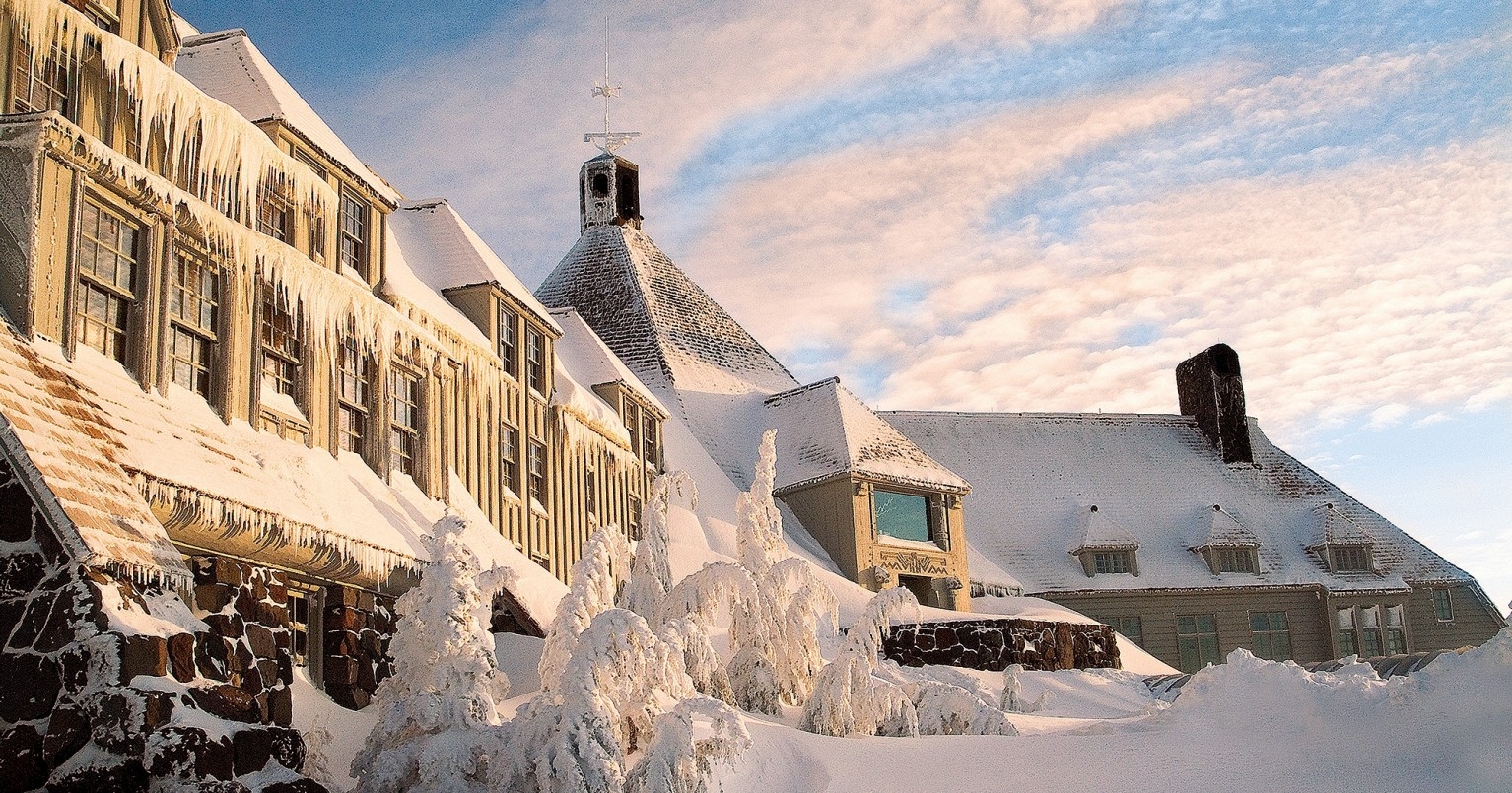


Constructed in 1937, Timberline Lodge stands on the south slope of Mt. Hood at an elevation of 6,000 feet. This beautiful 55,000 square foot structure rises out of a pristine alpine landscape and is still being used for its original intent – a magnificent ski lodge and mountain retreat for everyone to enjoy. Legendary and awe-inspiring, it's a tribute to the rugged spirit of the Pacific Northwest. Declared a National Historic Landmark in 1977, Timberline Lodge is one of Oregon’s most popular tourist attractions, drawing nearly two million visitors every year.
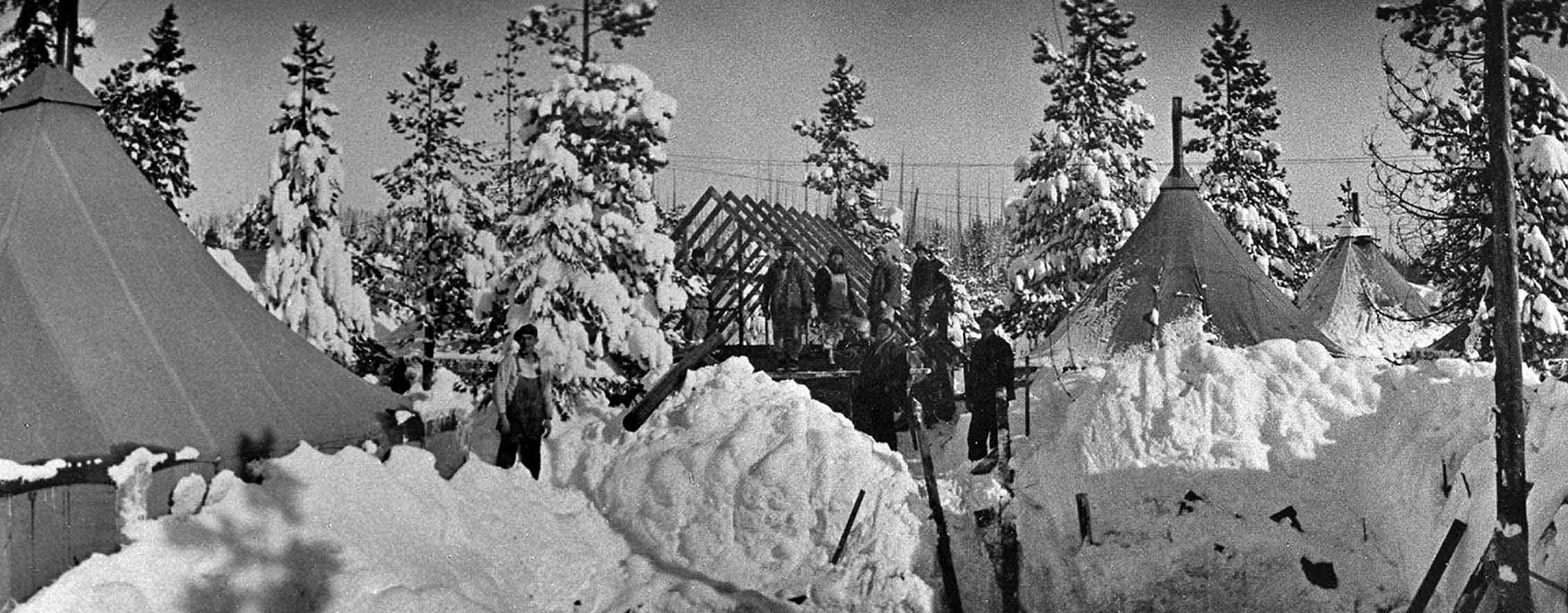
In 1929, the stock market crash sent the United States into the Great Depression until 1939. Workers in the country were desperate for jobs due to a high unemployment rate coupled with a poor economy. President Franklin D. Roosevelt created The New Deal, which consisted of several social and economic programs such as the Works Progress Administration (WPA) and Civilian Conservation Corps (CCC). These programs provided relief through public employment and funded the majority of Timberline’s construction.
This funding was the catalyst that started the creation of a ski lodge originally envisioned by several groups including Jack Meier of the Mt. Hood Development Association, and Francis E. “Scotty” Williamson Jr. of the USFS.
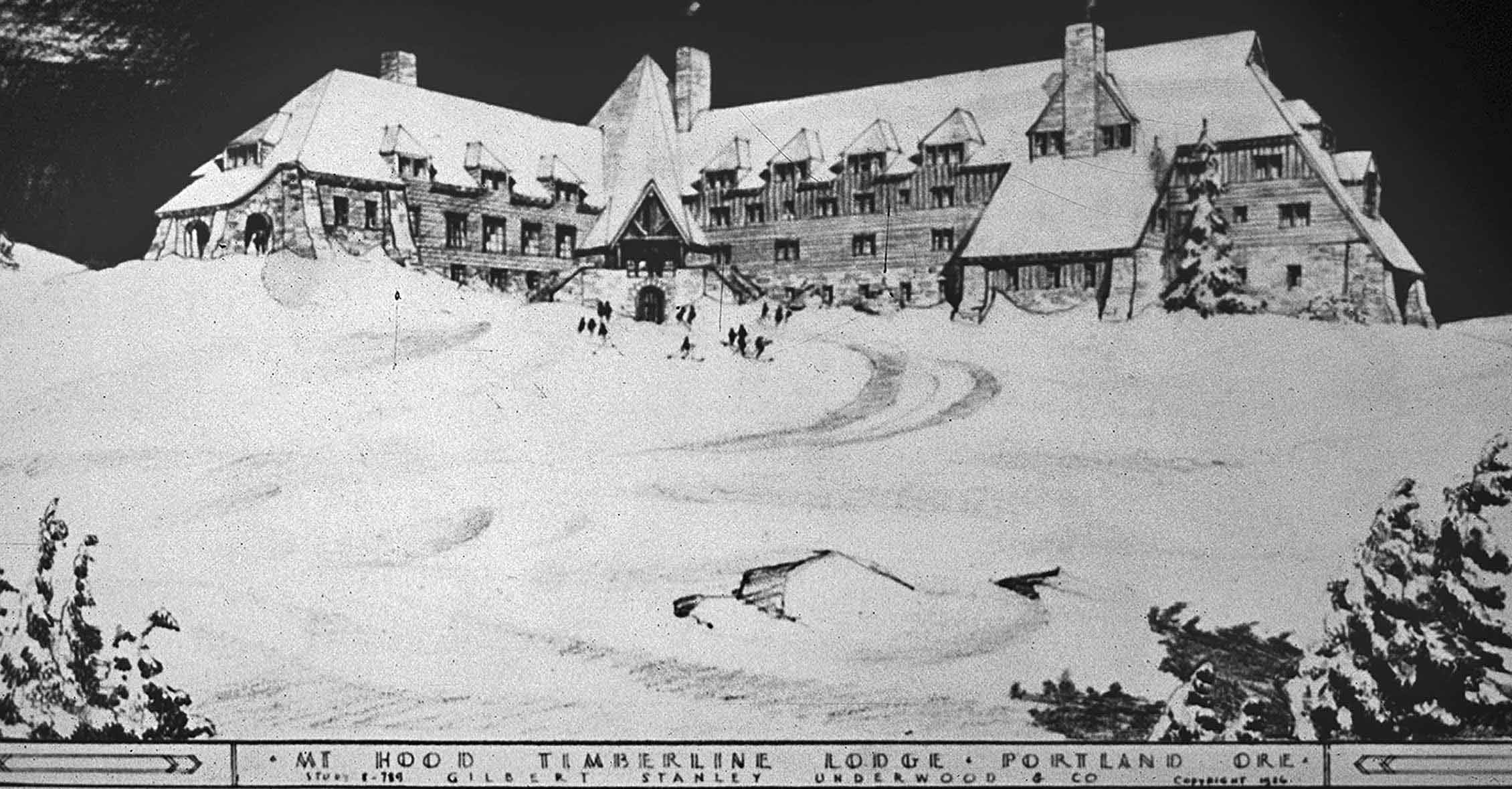
Emerson J. Griffith became Oregon’s WPA administrator and obtained funding from the WPA for $246,893 with additional funding from the Mt. Hood Development Association.
Gilbert Stanley Underwood, referred to as the “Parkitect,” is famously well known for designing several prominent National Park Service Lodges including Bryce Canyon Lodge, Zion Lodge and Yosemite’s Ahwahnee Lodge. Described as “the standard for architecture on public lands,” his rustic style was characterized by natural local materials and a design that blended into the landscape. His original design for the lodge focused on a central headhouse, which holds the 800,000 pound great stone chimney. The headhouse is flanked by two uneven wings where the dining room, guest rooms, and other facilities are located.
William I. Turner, Forest Service architect, used this term Cascadian Architecture to describe the design of Timberline Lodge because the roofline, with the steep pitch of the headhouse roof, mimicked the nearby peak of Mt. Hood. The overall design combined with the use of regional native materials created Cascadian Architecture.
The first phase of the lodge was to frame and roof the lodge in four months’ time. Considering the altitude of 6,000 feet, the short summer season, and harsh alpine climate, this project was a challenge. Daily, there could be between 100 and 470 workers onsite at a time. The WPA program aimed to employ and train as many people as possible. As a Federal Arts Project and a Master/Apprentice program, an additional purpose of the Lodge project was to purposely pair skilled artists and craftspeople with unskilled workers so as to teach them traditional skills in arts, crafts, and construction trades. Wages were 90 cents an hour for building trade laborers, 75 cents an hour for common laborers, and 55 cents an hour for unskilled laborers.
Margery Hoffman Smith, the assistant state director to the Federal Art Project in Oregon, was the interior designer for the lodge. Murals, paintings, and carvings for the lodge were commissioned from some of Oregon's most accomplished artists, including Darrel Austin, C.S. Price, Howard Sewall, Charles Heaney, Erich Lamade, Florence Thomas, Virginia Darcé, and Douglas Lynch. Smith integrated designs for wood furnishings, wrought-iron detailing and textile patterns to create a unique mountain resort. Two important objectives of the WPA were to develop independence through training and to encourage private enterprise. In 1976, Smith remembered: "Carpenters became cabinet makers, blacksmiths became art metal workers and sewing women wound up expert drapery makers."
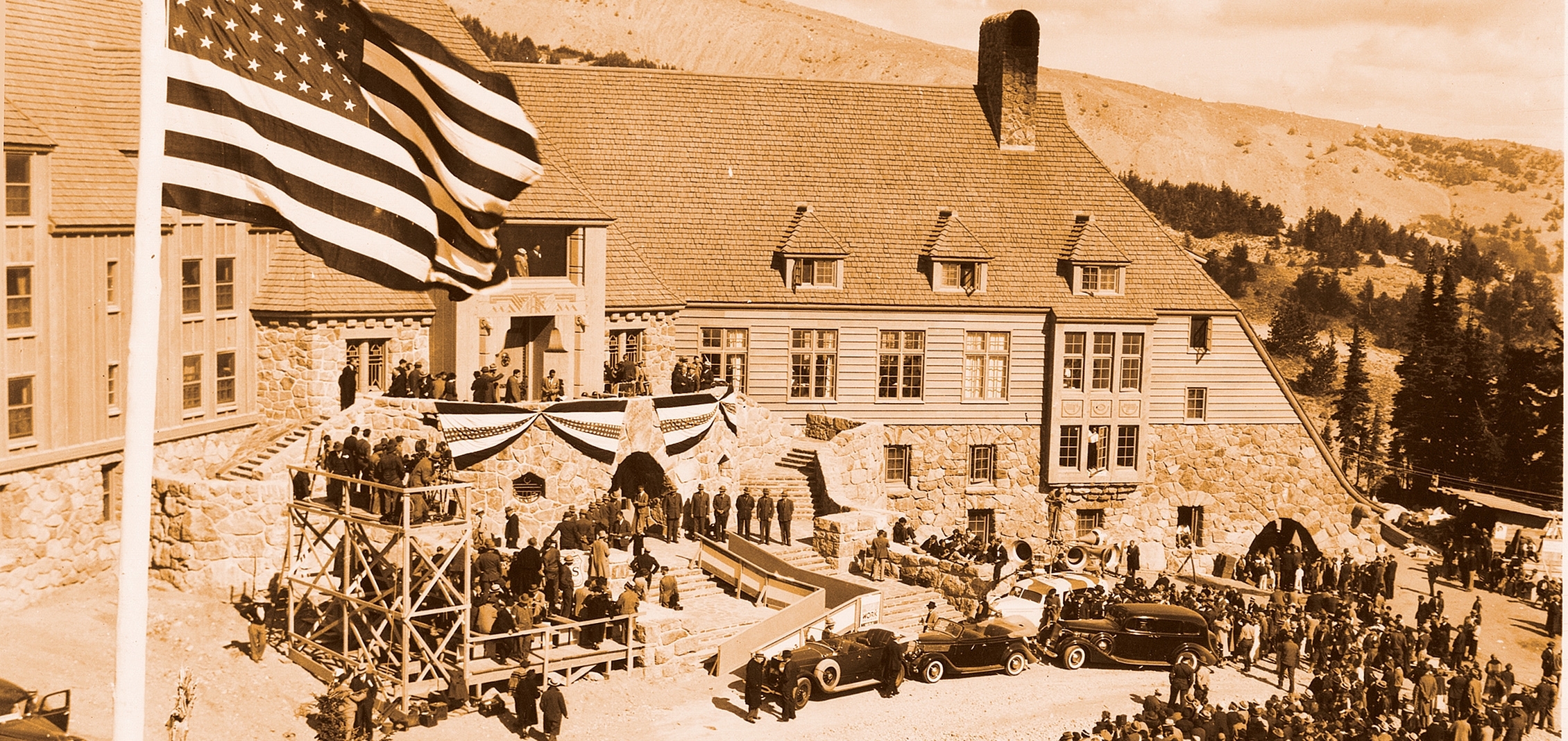
Construction of the lodge was completed in 15 months—a remarkable achievement.
On the morning of September 28, 1937, President Franklin D. Roosevelt, the First Lady, and an entourage of ninety arrived at the lodge to be greeted by an assemblage of twelve hundred. He dedicated the lodge, proclaiming that Timberline was a “monument to the skill and faithful performance of workers.”
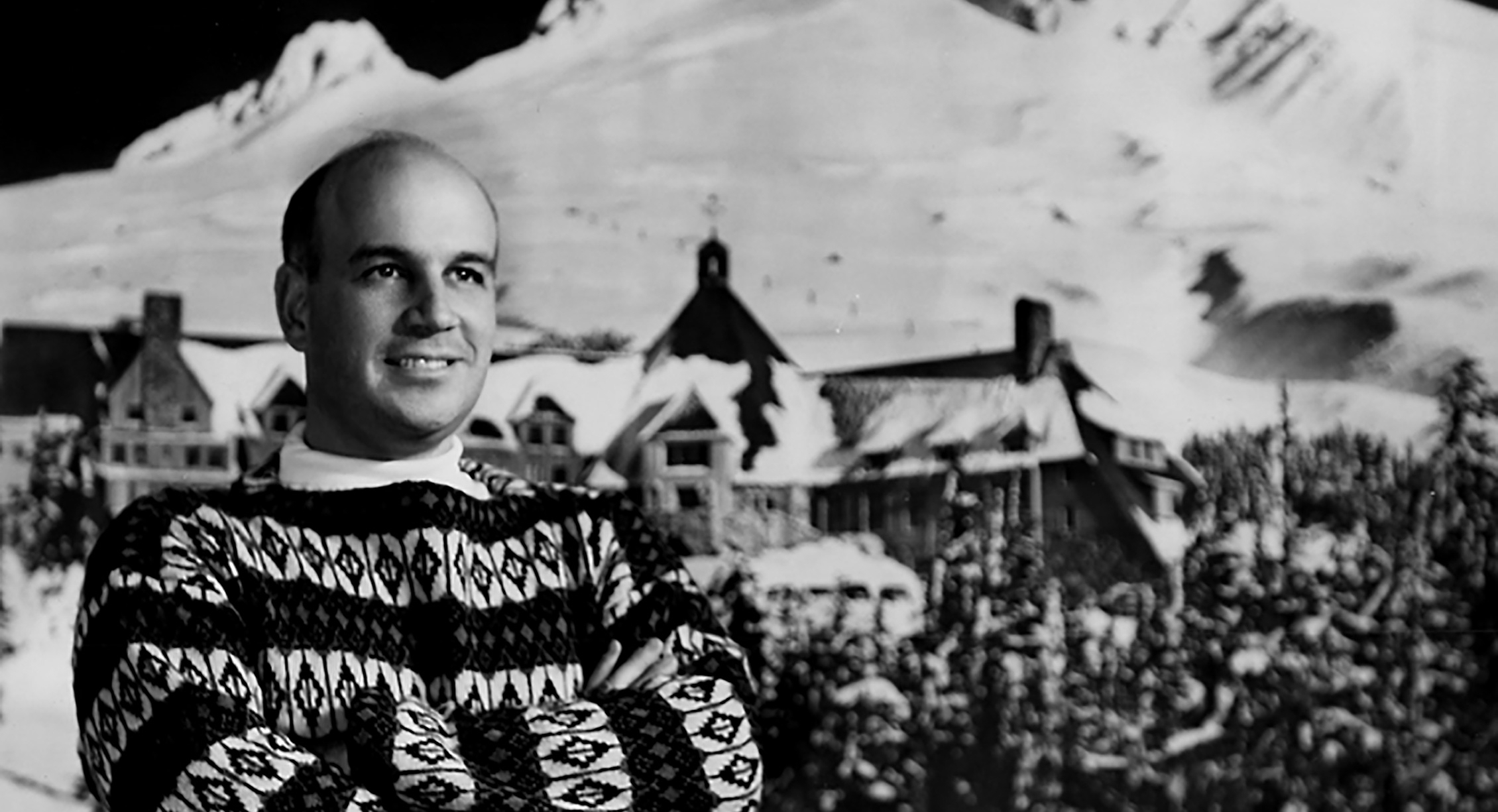
Timberline officially opened for overnight guests in February 1938. In 1939, the Magic Mile Chairlift is constructed. It is the first chairlift in Oregon and the second chairlift in North America, ushering in a golden era of skiing on Mt. Hood. The lift ascended to its top terminal building at 7,000’, that has since been converted into the now historic Silcox Hut.
The U.S. entered World War II on Dec. 7, 1941. This prompts a forced closure of Timberline Lodge as the country braced itself for difficult times. The Lodge re-opened in 1945, but management of the lodge proved challenging. On February 17, 1955, the USFS shuttered Timberline again due to mis-management and failure by its management company to pay its bills. Gambling and prostitution had found their way into the lodge just before the closure.
Richard L. Kohnstamm convinced the Forest Service that Timberline deserved one last chance. He was an unlikely candidate for the position as his background was outside of the hotel business. His energy and tenacity won out and on May 28, 1955 he was accepted by the Forest Service as the new operator for the lodge and ski area. He immediately began overhauling the rundown facility. After months of cleaning and repairs, the lodge re-opened on July 1, 1955. During the following years, alpine skiing would find a new popularity in America. Oregonians rallied behind Richard and his future vision for the lodge. For the first time in its history, Timberline would soon become a financially stable operation with a strong future outlook.
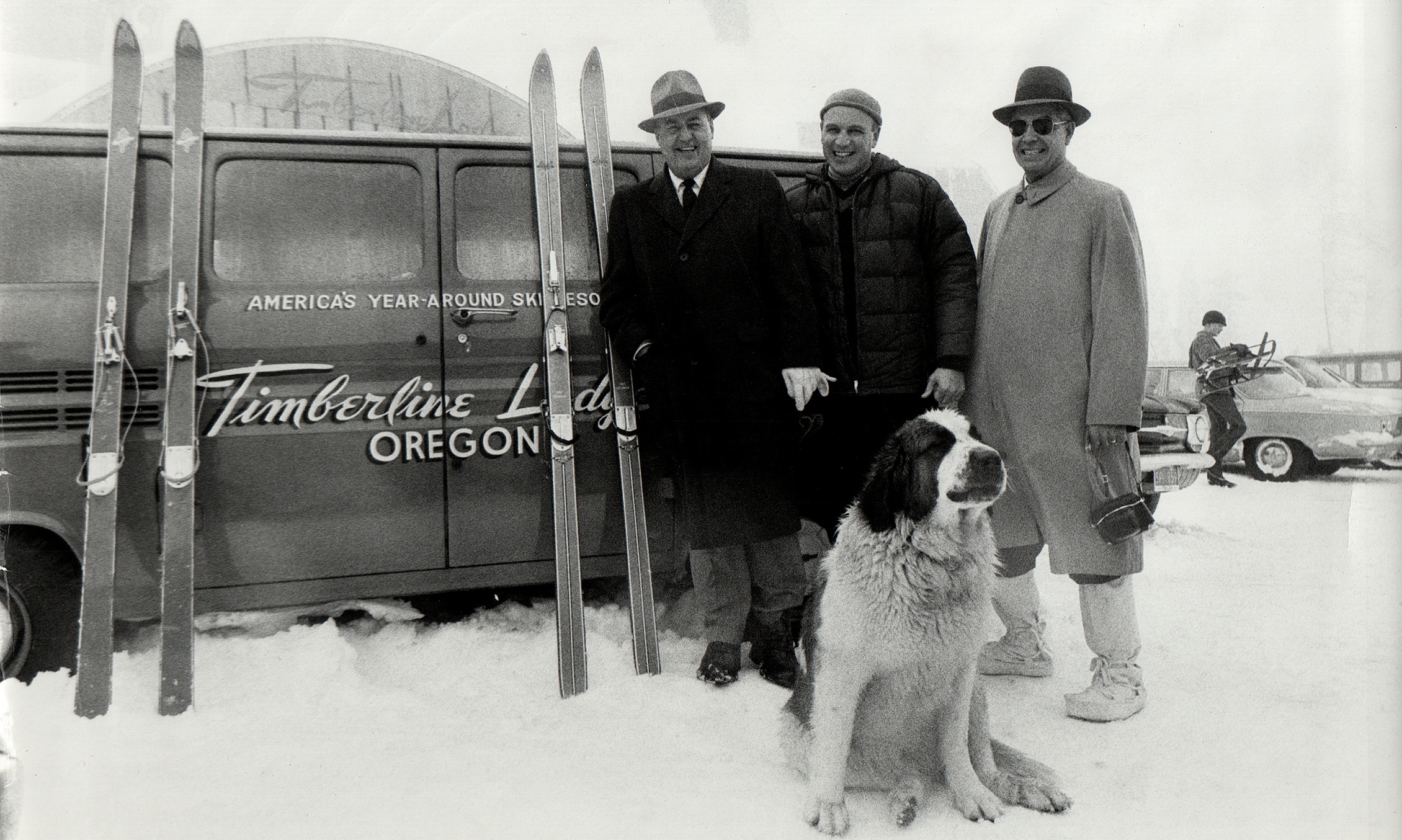
R.L.K. and Company was established to operate the lodge. It took five years for Richard to turn the lodge around financially. Between the time that Richard purchased the lodge and 1966, R.L.K. and Company invested more than a half-million dollars in Timberline, installing a heated swimming pool in 1958, constructing the Pucci and Victoria Station chairlifts, and acquiring Sno-Cats to transport skiers and tourists around Mt. Hood.
The ski boom and back-to-nature sentiments of the 1960s brought new momentum to Timberline and strengthened its economic base. The lodge was drawing 750,000 visitors annually by 1969. However, the wages of popularity were severe. Thousands of tourists were literally wearing away at the building. Eighty percent were sightseers who spent fifty cents or less while visiting. Richard and the Forest Service began developing plans for new facilities to accommodate the burgeoning crowds, but there was no funding to implement the plan. Richard traveled to Washington D.C. to lobby for funding. At the urging of the Oregon congressional delegation, supplementary funds were granted to finance new construction of a day lodge “to take the great burden of recreational masses out of Timberline, which is essentially a hotel and, believe it or not, a museum.” Funding was also used to complete Timberline's original design, which included an east wing convention center.
St. Bernards have been a part of Timberline’s traditions since 1937, when Franklin D. Roosevelt dedicated the lodge. The first Timberline St.Bernards were reportedly Hansel and Gretel, and then Lady and Bruel. For a brief time, the St. Bernard mascots were replaced with Huskies when the Kohnstamm family took over management of the lodge in the 1950s. Then, due to popular demand, the Kohnstamms reintroduced St. Bernards. Since the early 1960s the lodge has had St. Bernards named Heidi and Bruno. We are currently on Heidi #9 and Bruno #11! Timberline's St. Bernards reside with designated Timberline employees, but the dogs do report to work on a set schedule, greeting and posing with guests.
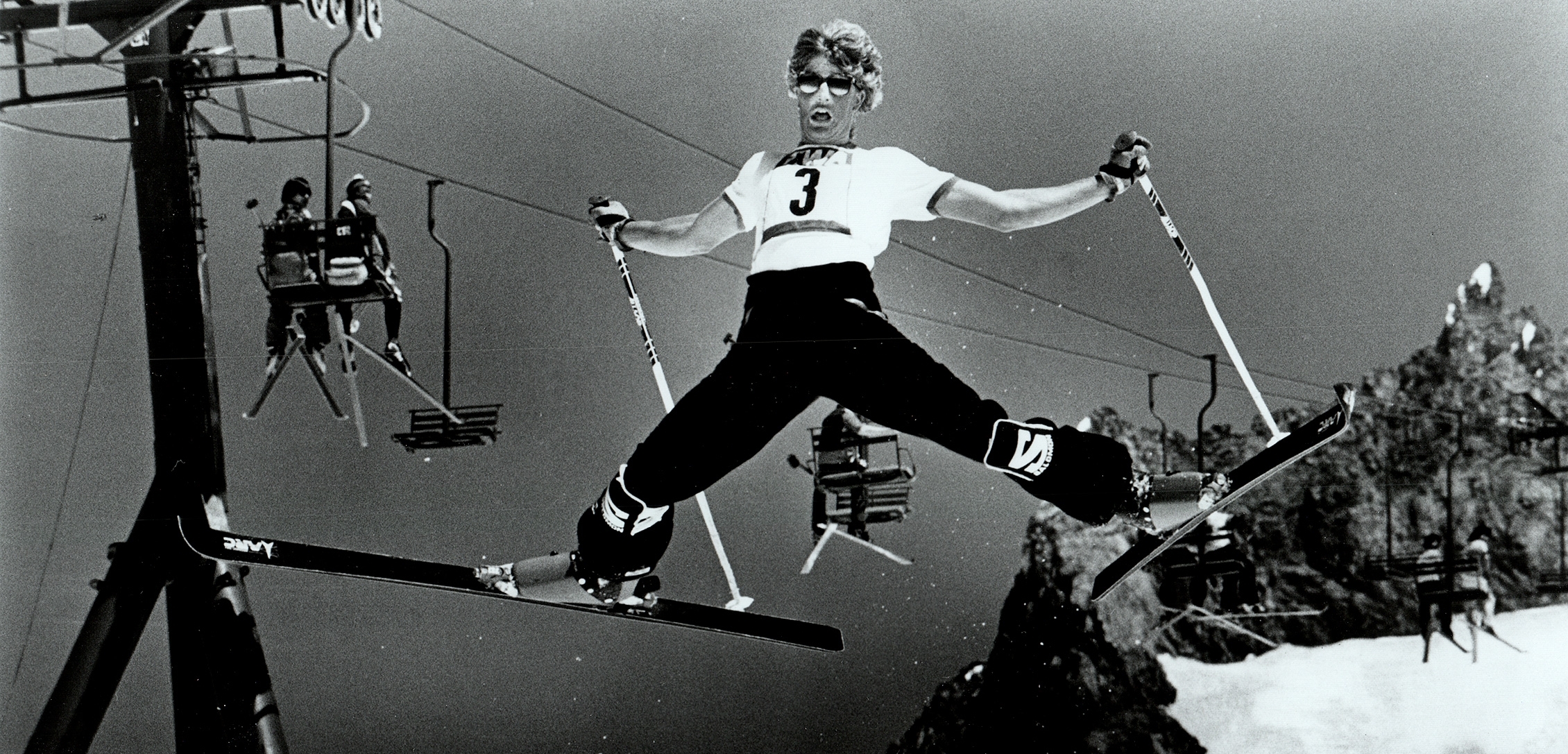
With funding in place, construction of Timberline's east wing convention center began in 1972. It was completed in 1975 after a particularly challenging winter of 30 feet of snow, that nearly crushed the addition. It was informally christened “the C.S. Price Wing” in honor of Oregon's early abstract painter whose work hangs throughout the lodge.
Also in 1975, Friends of Timberline was founded for the purpose of preserving the decorative arts and artifacts created by the original builders of Timberline. Together with the U.S. Forest Service and R.L.K. and Company, they continue to embrace the concept of collaborative stewardship.
On December 22, 1977, the U.S. Department of the Interior designated the lodge a National Historic Landmark—the finest example of WPA mountain architecture. This status conveys a higher level of preservation and historical meaning than does the National Register that listed the Lodge in 1973.
The next major Timberline expansion project, the Palmer chairlift, had been on Richard's mind since he took over the lodge's lease in 1955. After triumphing over financing, environmental, and philosophical challenges, permission was granted in 1977 to install the lift at the 8,500' level. Construction at that elevation was extremely difficult, but Richard's perseverance prevailed. Palmer attracts more the 100,000 skiers and snowboarders from around the world every summer.
Construction of the $7.2 million day lodge finally began in 1978. By then Timberline was being engulfed by nearly one million visitors a year. The Wy'East Day Lodge officially opened in 1981 and houses all skier services, including ticket sales, rentals, lessons, retail sales, guest lockers, and restaurants.
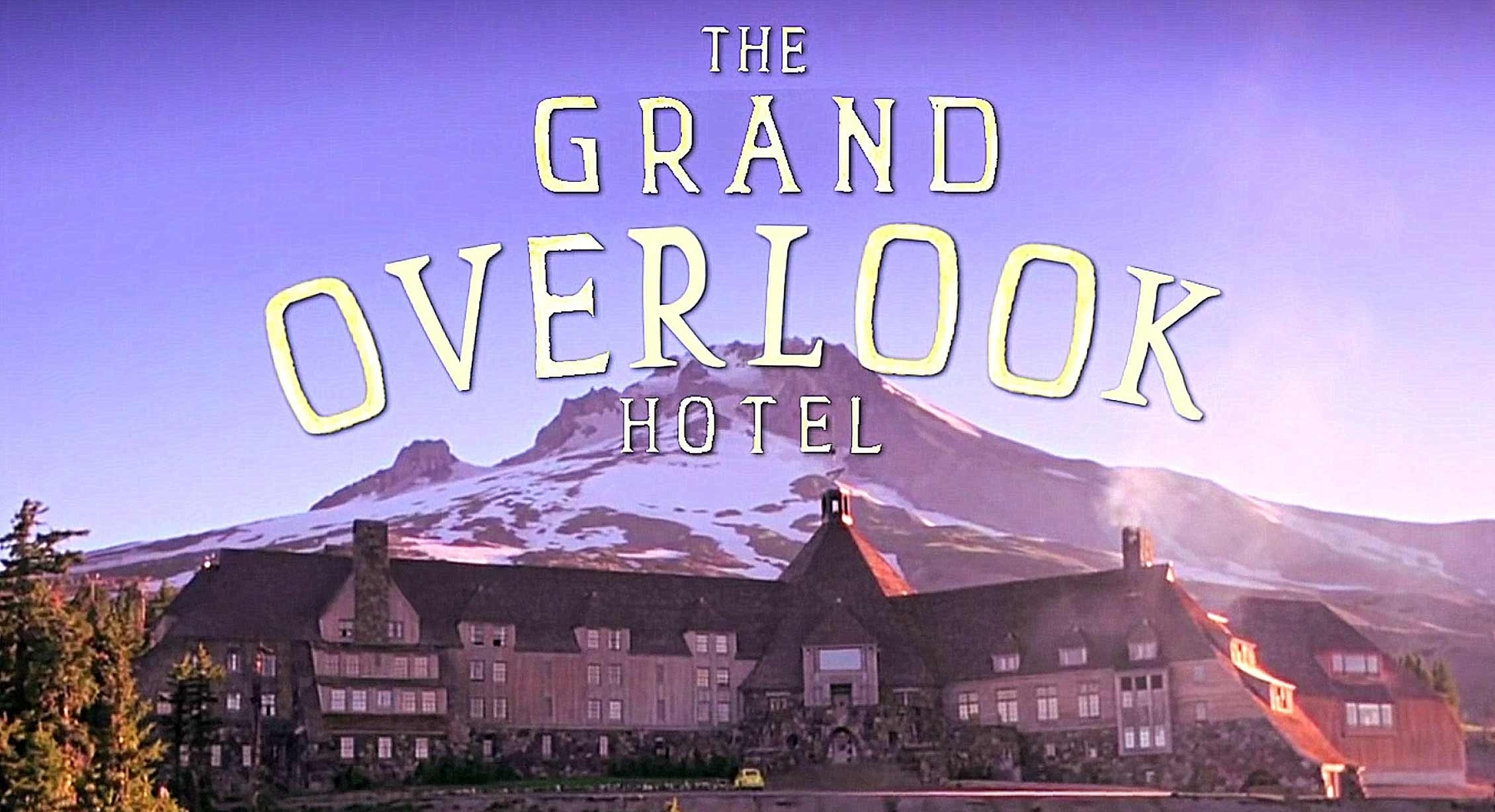
The 1980 cult-classic film The Shining, based on the Stephen King novel of the same name, used aerial shots of Timberline as part of its opening scene. Film of the exterior of Timberline Lodge was used for some establishing shots of the fictional Overlook Hotel throughout the movie. Several other shots in the film which purport to show the lodge, such as those of the hedge maze and loading dock, were taken at Elstree Studios in England, using a mock-up of the south face of the lodge. Kubrick was asked not to depict Room 217 (featured in the book) in The Shining, because future guests at the lodge might be afraid to stay there. So a nonexistent room, Room 237, was substituted in the film. However, Room 217 is requested more often than any other room at Timberline. Rest assured, Timberline is not haunted!
In the mid 1980s, snowboarding burst onto the scene. While considered a passing fad by some in the industry, it was and continues to be embraced and encouraged at Timberline. History was made at Timberline when the first hand-dug half-pipes were built by young snowboarders. Snowboard parks design and technology were started and perfected on the slopes of Timberline. The evolution of snowboarding continues to this day.
In 1987, Richard invited his son Jeff to work in an executive role at Timberline. Jeff had studied at Cornell University for their fine Hotel and Restaurant Management School, and then worked at hotels in Los Angeles and New York before returning to Timberline. Jeff was promoted to president of R.L.K. and Company in 1992. He continues to serve in this role today.
In the 1990s, new technologies and subsequent chairlift replacements kept the ski area state-of-the-art and provided the feasibility necessary for winter skiing on the popular Palmer Snowfield during low snow years.
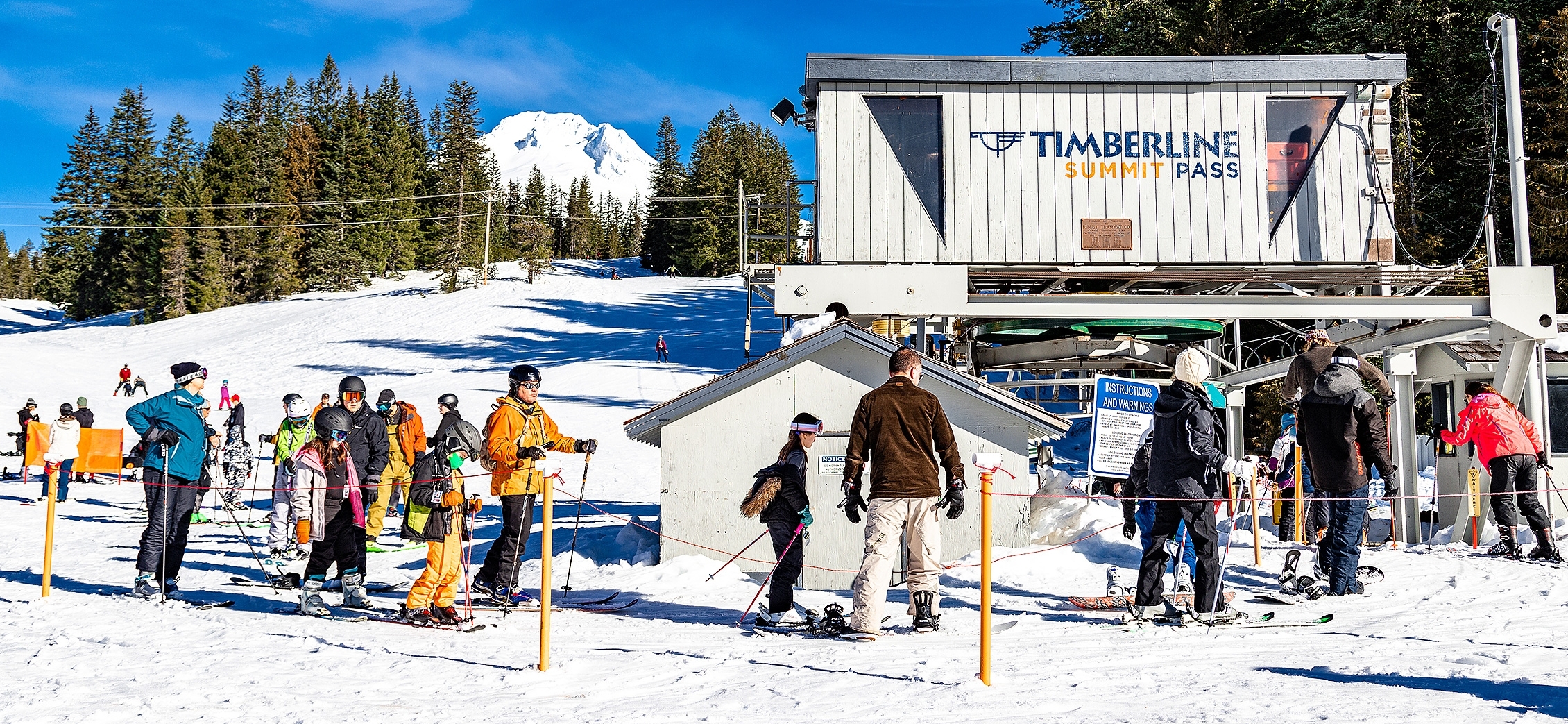
In 2006, there was a collective birthday party when the United States Forest Service turned 100, R.L.K. and Company turned 50, and the Friends of Timberline turned 30. Richard's health was failing, but he reveled in the many celebrations that year, which culminated with an employee reunion that brought people from all over the country. It was a sentimental journey, as well as a celebration of accomplishments and collective stewardship. Richard passed away in April 2006. U.S. Representative Earl Blumenauer memorialized him before the House of Representatives as "a visionary leader who conceived and then for half a century led the Kohnstamm family crusade to restore the jewel that is Timberline Lodge." In 2009, Congress designated a 126-acre parcel of land above the Palmer ski lift as the Richard L. Kohnstamm Memorial Wilderness Area, to recognize the balance between wild and developed areas in the national public lands system and to create a tribute to "the man who saved Timberline Lodge."
In 2007, the Still Creek Basin area of eight new trails was developed and made accessible with the new Jeff Flood Still Creek Basin chairlift. While this project essentially completed the “build-out” of the permit area. However, our vision for the future contemplates a number of on-site customer service improvements, and a connection to the ski town of Government Camp.
In September 2018, Timberline started construction on the Timberline Bike Park after several years of environmental testing, approval processes, and a law suit. The bike park officially opened in August 2019 offering mountain bike trails for all ages and abilities, accessible via the Jeff Flood chairlift.
Also in 2018, R.L.K. and Company acquired Summit Ski Area in Government Camp and rebranded it Timberline Summit Pass. Built in 1927, it is the second oldest continuously operating ski area in the United States and the oldest ski area in the Pacific Northwest.
In October 2021, a special use permit was granted for the land between Summit Pass and Timberline in order to combine the two ski areas into one. This increases Timberline's vertical from 3,690' to 4,540', the longest vertical terrain in the United States. While not yet lift-accessible, Timberline continues to make improvements on the trail connecting the two ski areas, provides shuttle service from Government Camp up to Timberline, and purchased new snowcats for guests to ski Palmer all winter long. There are also serious plans to install a gondola between Summit Pass and Timberline within the next 10 years.